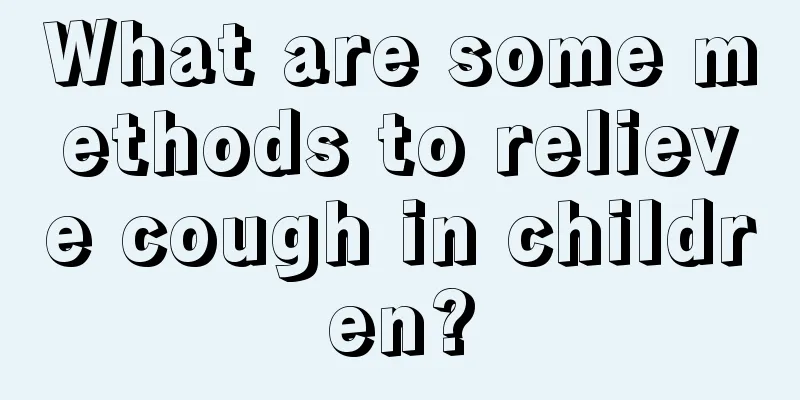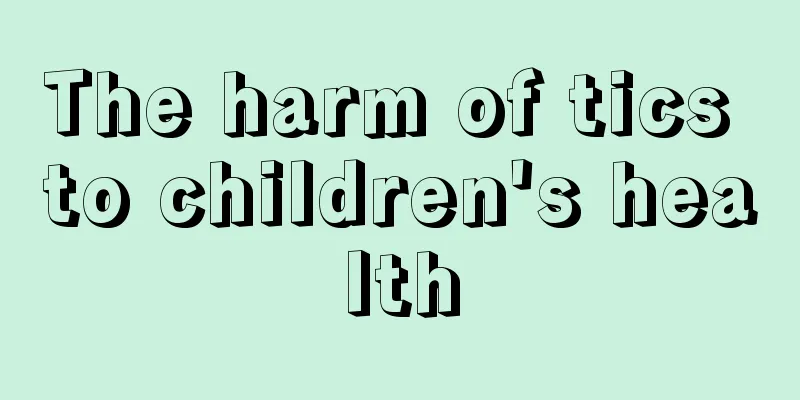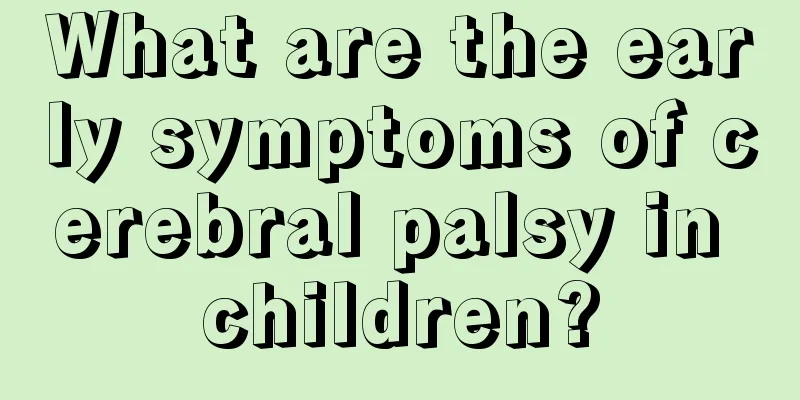What are some methods to relieve cough in children?

|
Children often have symptoms of coughing. There are many reasons for coughing, such as coughing after eating the wrong thing or catching a cold. This is related to the poor resistance of children. Coughing is usually accompanied by other symptoms. Coughing also has different classifications, so you should choose a cough suppression method based on the specific type of cough. Many cough suppression measures are introduced below. First, three dietary treatments for cold and cough 1. Ginger + brown sugar + garlic If a child has a cold, drinking warm ginger and brown sugar water can be a good therapeutic treatment. If the child also has a cough, add 2 to 3 cloves of garlic to the ginger and brown sugar water and cook together. Cook over low heat for 10 minutes to remove the spiciness of the garlic. Only then will the child be willing to drink it. 2. Steamed Garlic Water Take 2 to 3 cloves of garlic, smash them, put them in a bowl, add half a bowl of water, put in a piece of rock sugar, cover the bowl and put it in the pot to steam. After boiling over high heat, switch to low heat and steam for 15 minutes. When the garlic water in the bowl is warm, feed it to your child. The garlic does not need to be eaten. Generally 2 to 3 times a day, half a bowl each time. Garlic is warm in nature and enters the spleen, stomach and lung meridians. It is very effective in treating cold coughs and kidney deficiency coughs. It is also convenient and simple, and children are willing to drink it. 3. Pear + Sichuan pepper + rock sugar Wash a pear, cut it in half horizontally and remove the core. Add 20 peppercorns and 2 crystal sugars. Put the pear halves in a bowl and steam it for about half an hour. One pear can be eaten in two times. Steamed pears with pepper and rock sugar are very effective in treating cold and cough, but some children don’t like the taste of pepper, so parents can choose for themselves. The above are dietary recipes for treating cold and cough. While parents use these methods to treat the disease, they should also pay attention to the fact that the following cold foods should not be eaten by children: mung beans, crabs, clams, snails, snails, persimmons, grapefruit, bananas, kiwis, sugarcane, watermelons, melons, bitter melons, water chestnuts, arrowheads, kelp, seaweed, raw radishes, eggplants, artemisia selengensis, lotus roots, winter melons, loofahs, sweet potatoes, etc. Second, two prescriptions for wind-heat cough 1. Pear + rock sugar + Sichuan Fritillary Cut the pear in half horizontally near the stem, dig out the core and add 2 to 3 crystal sugars and 5 to 6 Fritillaria cirrhosa (the Fritillaria cirrhosa should be crushed into powder). Put the pear in half and put them in a bowl. Steam it for about 30 minutes and feed it to your baby in two portions. This recipe has the effects of moistening the lungs, relieving cough and resolving phlegm. Because babies nowadays generally like to stay cool, they turn on the air conditioner when they are hot and eat cold fruits all year round, so the number of babies suffering from wind-heat cough has decreased significantly. 2. Boil radish water Wash the white radish, cut it into 4 to 5 thin slices, put it in a small pot, add half a bowl of water, bring it to a boil, then simmer for 5 minutes on low heat. Wait until the water cools down a little before giving it to your baby. This recipe is very effective in treating wind-heat cough, dry nose and throat, and dry cough with little sputum. It is more effective for babies under 2 years old. In addition, you can also give your baby the following foods: ① Persimmon: It is very cold in nature and can clear away heat, resolve phlegm and relieve cough. But the baby can only eat one at a time, and eating too much will make his stomach uncomfortable. ② Watermelon: It is cold in nature and can cure all fever symptoms. If your baby suffers from wind-heat cough in summer, you can let him eat more watermelon. ③Loquat: cool in nature, can moisten the lungs, reduce phlegm and relieve cough. It is suitable for babies with febrile cough and yellow sputum. ④ Water chestnut: It is cold in nature. Water chestnut water can resolve phlegm and clear away heat. Take 2 to 3 water chestnuts, peel them, cut them into thin slices, put them in a pot, add a bowl of water, and cook on the fire for 5 minutes. This prescription is effective for patients with febrile cough and sputum. Third, internal injury cough Internal injury cough refers to a long-term, recurring chronic cough. Or the cough may be caused by a cold or fever. Although the symptoms of the cold and fever have disappeared, the cough has not gone away. Babies who cough repeatedly have poor appetite and no appetite due to the excessive use of anti-inflammatory and cough suppressants, and their tongue is almost covered with white coating. Therefore, parents should first regulate the baby's spleen and stomach and improve the baby's physical fitness. The specific dietary therapy is as follows: Yam porridge Peel the yam, cut it into small pieces and put it into a food grinder. Add half a bowl of water and process the yam into a thin paste. Then pour it into the pot, put it on the fire, stir constantly and bring to a boil. It is best for babies to eat it on an empty stomach. A bowl of prepared yam porridge can be fed to the baby in 2 to 3 times. Yam strengthens the spleen and stomach, replenishes lung qi, and benefits kidney essence. This recipe is most suitable for infants and young children. It can not only relieve cough and treat asthma, but also has a good therapeutic effect on children's anorexia, excessive sweating, drooling, qi deficiency and timidity. It should be noted that the yam should not be boiled for too long, otherwise the amylase contained in it will decompose and lose its nourishing effect. |
<<: Eight reasons why children have excessive lead levels
>>: What is the best way to treat lung heat in children?
Recommend
What are the main characteristics of children with ADHD?
Everyone understands ADHD as children being hyper...
The baby wakes up very frequently
Sleep is a prerequisite for ensuring the healthy ...
Why do babies yawn frequently?
Many parents will find that their children yawn f...
Diagnosis and treatment of hemorrhage in children
Urticaria is a disease that is easy to get. This ...
5-year-old child with astigmatism
Economic development in recent years has brought ...
What should I do if my child walks with his legs splayed? Use these three tips to prevent it
When many children walk, their feet naturally spr...
How to treat allergic rhinitis in children?
The health status of children is of great concern...
Why do children not speak clearly?
We often encounter some children who are already ...
What to eat when baby has low white blood cell count
Because white blood cells are a very important ty...
Nine-month-old baby early education method
When the baby reaches the ninth month, he has alr...
Nursing measures for phototherapy of neonatal jaundice
Every child is the treasure of the family, especi...
What is the cause of the sunken fontanelle in babies?
Some babies have a sunken fontanelle, but parents...
Symptoms and treatment of colic in children_Treatment of colic in newborns
Because children have relatively low resistance, ...
What should I do if my baby doesn't poop for several days?
What should I do if my baby doesn’t have a bowel ...
Three month old baby's fart smells bad but he doesn't poop
It is actually very unhealthy for a three-month-o...









